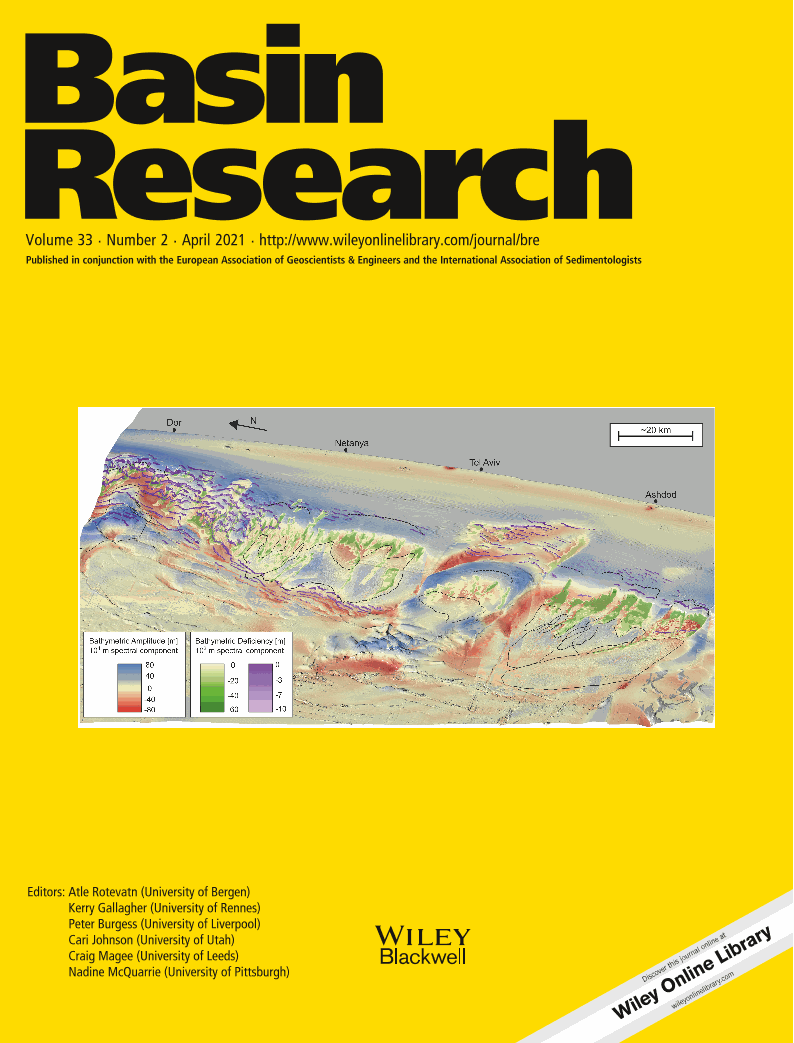
Full text loading...
 , Paul J. Umhoefer1
, Paul J. Umhoefer1
The Sivas Basin overlaps the northern Neotethys suture zone in central Anatolia (Turkey) and contains a ca. 12‐km thick succession of Cenozoic strata that provides an exceptional record of major tectonic transitions from subduction to continental assembly and tectonic escape. Consensus regarding the tectonic and palaeogeographic evolution of this segment of the Arabia‐Eurasia collision zone has been hindered by uncertainty in the tectonic setting of the early (Palaeogene) Sivas Basin, which has been variably interpreted as a remnant ocean, forearc, foreland, wedge‐top or intracontinental extensional basin. Here we integrate new geologic mapping (>5,000 km2), stratigraphy, facies analysis and U‐Pb geochronology from the western Sivas Basin to produce a detailed time‐stratigraphic framework and a refined Palaeogene tectono‐sedimentary model for the Sivas Basin. Earliest marine sedimentation occurred during the Maastrichtian‐Palaeocene in a remnant ocean setting due to incomplete closure of the northern Neotethys Ocean. Rapid accumulation of >2 km of basin floor turbidites during the middle to late Eocene reflect a transition to a foreland setting. A major late Eocene unconformity (ca. 38–34 Ma) coincides with the initiation of the north‐vergent southern Sivas fold‐thrust belt, which inverted and structurally partitioned the basin into a southern wedge‐top and a northern evaporitic foreland basin; the entire basin was dominantly nonmarine after this unconformity. Published palaeomagnetic data integrated with a newly discovered tuff dated at 31.9 Ma reveal that the 2.8‐km thick Altinyayla Formation was deposited from ca. 34 to 26 Ma in an unconfined braided fluvial system. Close stratigraphic correlations between the western, central and northern Sivas Basin suggest that the entire basin evolved from a remnant ocean to peripheral retro‐foreland basin during the middle to late Eocene, and finally a fragmented foreland basin since the Oligocene. This general evolution may be a characteristic of such sedimentary basins formed on suture zones across Anatolia and in other collisional orogens globally.
,Conceptual block diagrams showing our proposed tectono‐sedimentary evolution of the western Sivas Basin (red box in inset map) during deposition of TS‐1 (a,b,c) and TS‐2 (d); see Figure 2 for location of X‐X′. (a) Maastrichtian to Paleocene Tauride‐Pontide collision in the easternmost Sivas Basin led to incomplete subduction and a remannt ocean setting in the western Sivas Basin; additional accommodation space may have been generated by an enigmatic phase of extension. (b) Middle Eocene contraction in the Tauride thrust belt to the south led to rapid subsidence in the Sivas Basin and a transition to a flexural foreland basin setting. (c) Northward propagation of shortening during the latest Eocene marked another switch to a fragmented foreland setting involving basin inversion, uplift and isolation from the marine realm, and initiation of the southern Sivas fold‐thrust belt (SSFTB), which structurally partitioned the Sivas Basin into a southern wedge‐top and northern evaporitic foreland basin during the Oligocene (d). A – Altınyayla; B – Bünyan; other abbreviations as in Figure 1.

Article metrics loading...

Full text loading...
References


Data & Media loading...

